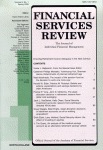Uninsured Idiosyncratic Risk and Aggregate Saving,
DOI:
https://doi.org/10.1016/1057-0810(95)90020-9Abstract
A qualitative and quantitative analysis of the standard growth model modified to include p~caution~ saving motives and liquidity constr~nts is presented. The impact on the aggregate saving rate, the importance of asset trading to individuals, and the relative inequality of wealth and income distributions are addressed. Results suggest that the contribution of uninsured idiosyncratic risk to aggregate saving is quite modest, at least for moderate and empirically plausible values of risk aversion, variability, and persistence in earnings. However, for sufficiently high variabitity and persistence in earnings, theaggregate saving rate could be higher by as much as 7 to 14 percentage points. In addition, in contrast to representative agent models, it turns out that access to asset markets is quite important in enabling customers to smooth out earnings fluctuations. Quarterly Journal of Economics, August 1994, 109(3): 659-684. (Reprinted with permission of AEWInform, Copyright UMI.)
Published
How to Cite
Issue
Section
License
Copyright (c) 1995 JAI Press Inc.

This work is licensed under a Creative Commons Attribution-NonCommercial 4.0 International License.
Author(s) retain copyright and grant the Journal right of first publication with the work simultaneously licensed under a Creative Commons Attribution-NonCommercial 4.0 International License that allows to share the work with an acknowledgment of the work's authorship and initial publication in this Journal.
This license allows the author to remix, tweak, and build upon the original work non-commercially. The new work(s) must be non-commercial and acknowledge the original work.


